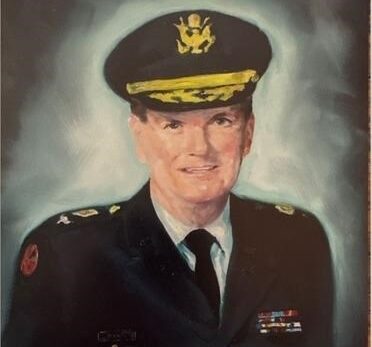[fusion_builder_container type=”flex” hundred_percent=”no” equal_height_columns=”no” hide_on_mobile=”small-visibility,medium-visibility,large-visibility” background_position=”center center” background_repeat=”no-repeat” fade=”no” background_parallax=”none” parallax_speed=”0.3″ video_aspect_ratio=”16:9″ video_loop=”yes” video_mute=”yes” border_style=”solid”][fusion_builder_row][fusion_builder_column type=”1_1″ layout=”1_1″ background_position=”left top” border_style=”solid” border_position=”all” spacing=”yes” background_repeat=”no-repeat” margin_top=”0px” margin_bottom=”0px” animation_speed=”0.3″ animation_direction=”left” hide_on_mobile=”small-visibility,medium-visibility,large-visibility” center_content=”no” last=”true” hover_type=”none” min_height=”” link=”” background_blend_mode=”overlay” first=”true”][fusion_text columns=”” column_min_width=”” column_spacing=”” rule_style=”” rule_size=”” rule_color=”” hue=”” saturation=”” lightness=”” alpha=”” user_select=”” content_alignment_medium=”” content_alignment_small=”” content_alignment=”” hide_on_mobile=”small-visibility,medium-visibility,large-visibility” sticky_display=”normal,sticky” class=”” id=”” margin_top=”” margin_right=”” margin_bottom=”” margin_left=”” fusion_font_family_text_font=”” fusion_font_variant_text_font=”” font_size=”” line_height=”” letter_spacing=”” text_transform=”” text_color=”” animation_type=”” animation_direction=”left” animation_color=”” animation_speed=”0.3″ animation_delay=”0″ animation_offset=”” logics=””]
Col. Edward Thomas Ryan, a U.S. military veteran, died earlier this month and came out as gay in his obituary. Col. Ryan wrote:
“I must tell you one more thing. I was Gay all my life: thru grade school, thru High School, thru College, thru Life. I was in a loving and caring relationship with Paul Cavagnaro of North Greenbush. He was the love of my life. We had 25 great years together. Paul died in 1994 from a medical procedure gone wrong. I’ll be buried next to Paul. I’m sorry for not having the courage to come out as Gay. I was afraid of being ostracized: by Family, Friends, and Co-Workers. Seeing how people like me were treated, I just could not do it. Now that my secret is known, I’ll forever Rest in Peace.”
Col. Ryan’s story is a powerful reminder of the struggles many LGBTQ+ service members faced prior to and during the Don’t Ask, Don’t Tell (DADT) era. His courage in sharing his truth, even posthumously, is a testament to the need for continued advocacy and support for LGBTQ+ individuals in all walks of life, including the military. Despite challenges, there are promising signs of progress. For instance, the Air Force is often cited for its more progressive LGBTQ+ policies and the U.S.A.F’s volunteer LGBTQ Initiative Team (LIT) which works to identify and address issues that hinder the success of LGBTQ+ airmen and guardians. However, it’s important to note that even in traditionally more conservative branches like the Army, the environment can be incredibly supportive for LGBTQ+ individuals when there’s strong, inclusive leadership at the command level.
Despite perceived conservativism and heteronormativity, the U.S. Armed Forces is the largest employer of transgender people in this country with an estimated 15,500+ transgender people actively serving and an estimated 79,000+ LGB people in active service (approximately 6% of military forces). Since the most recent LGBTQ+ military data is from 2014 (three years after DADT ended and before the end of the transgender ban) we believe these numbers are conservative and vastly underestimated.
While we are starting to see positive change from the DoD on restoring dignity and access to benefits to those with less-than-honorable discharges, there is significant progress that still must be made:
- June 1st marked the one-year anniversary of the DoD’s ban on drag activities on military installations. The censorship of LGBTQ+ friendly events sends the message to LGBTQ+ members of the armed forces that wearing their preferred clothing or acting in a manner different from the gender assigned to them at birth is unacceptable. We have received multiple reports of increased LGBTQ+ discrimination since the start of the ban and several reports in May-June 2024 that LGBTQ+ friendly Pride events are being denied, postponed, or held in observance of other events to limit mentions of Pride month.
- Congress continues to force anti-LGBTQ+ riders into appropriations bills in hopes of restricting and banning access to medically necessary care, targeting transgender youth, and empowering discrimination against LGBTQ+ people. States with the largest active-duty populations have the worst anti-LGBTQ+ laws with 43% or more of active-duty troops living in the worst or high-risk areas for anti-LGBTQ+ laws.
- Veterans Affairs continues to deny access to gender-affirming surgeries for veterans despite Tricare offering these same services for active service members. We have also seen an increase in anti-LGBTQ+, particularly anti-transgender discrimination happening at VA facilities across the country – even in locations that are perceived to be more LGBTQ+ regions.
This Pride month, Modern Military is proud to support LGBTQ+ service members, veterans, and their families. We envision an inclusive and equitable military environment where every member of the LGBTQ+ and HIV-positive community is respected, valued, and empowered to thrive.
[/fusion_text][/fusion_builder_column][/fusion_builder_row][/fusion_builder_container]
© Copyright modern military association | EIN 52-1845000 | all rights reserved | legal & Financial
